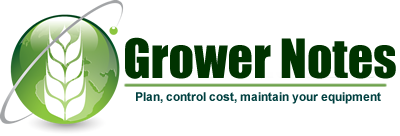



In the world of modern agriculture, equipment plays a vital role in driving efficiency, productivity, and profitability. However, effective equipment management is crucial to ensure that machinery and tools remain reliable, cost-effective, and efficient. Whether you're managing large-scale farming equipment or small garden tools, following best practices can help minimize downtime, extend equipment life, and maximize output.
Here are some key fundamentals of equipment management every grower should be familiar with:
First and foremost, it’s essential to keep an up-to-date inventory of all your equipment. This helps you stay organized and enables you to track usage, plan maintenance, and ensure you’re not missing critical pieces when they’re needed most.
Maintaining your equipment regularly prevents breakdowns and keeps your tools in optimal working condition. Scheduled maintenance checks should be a part of your growing cycle, ensuring all machinery is lubricated, cleaned, and free of wear and tear.
Routine Maintenance Includes:
Even the best equipment can become ineffective or dangerous if not used properly. It’s important to provide comprehensive training for anyone who will be operating your tools or machinery. This includes understanding safety protocols, handling equipment correctly, and knowing how to perform basic troubleshooting.
Safety Tips:
Proper storage is often overlooked but is crucial to equipment longevity. Leaving machinery exposed to the elements can lead to corrosion, electrical issues, and other damage. Make sure you have designated, climate-appropriate storage areas for different types of equipment.
Best Practices:
Understanding how often and in what conditions your equipment is used can help predict when maintenance is required. Monitoring wear can also provide valuable insights into the lifespan of your tools and machines.
Why Track Usage?
No matter how well you maintain your equipment, eventually, parts will wear out or machinery will become obsolete. Planning for repairs and replacements in advance will save you from scrambling when something breaks during a critical point in your growing season.
Repair Tips:
Equipment can be a significant financial investment, so it’s important to continually analyze the cost of maintaining, repairing, and replacing it. Performing a cost-benefit analysis of older machines versus new purchases can provide clarity on when it's time to invest in upgraded equipment.
Questions to Ask:
Effective equipment management is not just about maintaining machinery—it's about optimizing your entire operation. From regular maintenance to smart financial planning, focusing on the fundamentals of equipment management will help you maintain a productive, efficient, and safe growing environment. Whether you’re a large-scale farm or a hobby grower, the benefits of proper equipment care are clear: reduced costs, increased productivity, and a longer equipment lifespan.
By adopting these best practices, you can ensure that your tools and machinery serve you well for many seasons to come.

Experienced farmers prioritize soil care, allowing nature to handle much of the plant growth process. Paying close attention to soil health is essential for a thriving growing season. Grower Notes is designed to help you track your field's condition and document any adjustments you make to enhance crop performance.

Our crop planner serves as an all-in-one tool, handling task management, expenses, and detailed note-taking. You can easily personalize note categories or take advantage of pre-built templates for added ease. Track, update, and review a year-end summary of expenses. Additionally, your entire crop history is effortlessly displayed in the field module records.

Easily keep track of treated crops, the pesticides used, and their application schedules in a single location. With centralized records, generating usage reports is quick and hassle-free. Forget about cumbersome spreadsheets or paper logs—our software simplifies the process, offering a convenient and efficient solution.
More Information
Leverage our Project Module to plan and oversee diverse projects, like building a barn. Effortlessly track tasks, expenses, and important details to ensure no crucial steps are overlooked. While project management can feel overwhelming, our tool makes it easy for anyone to create well-organized, detailed projects with confidence and simplicity.
More Information